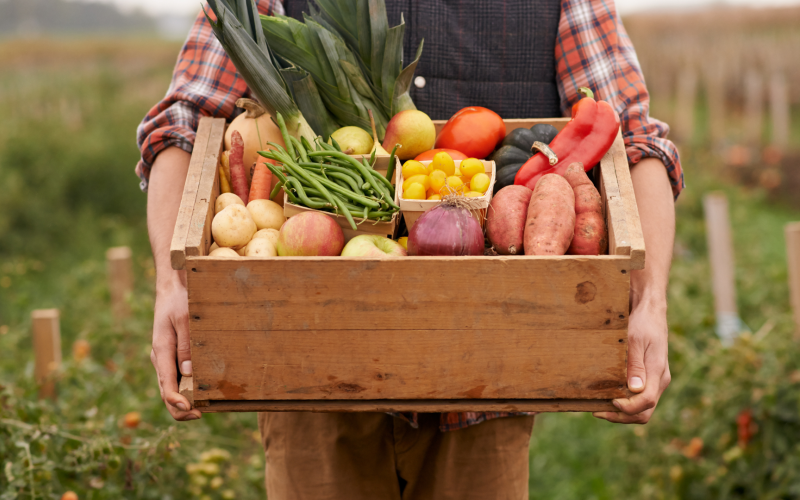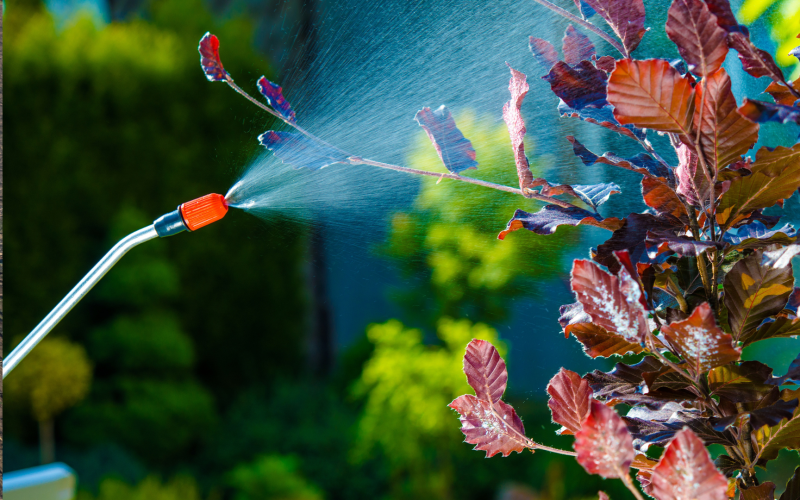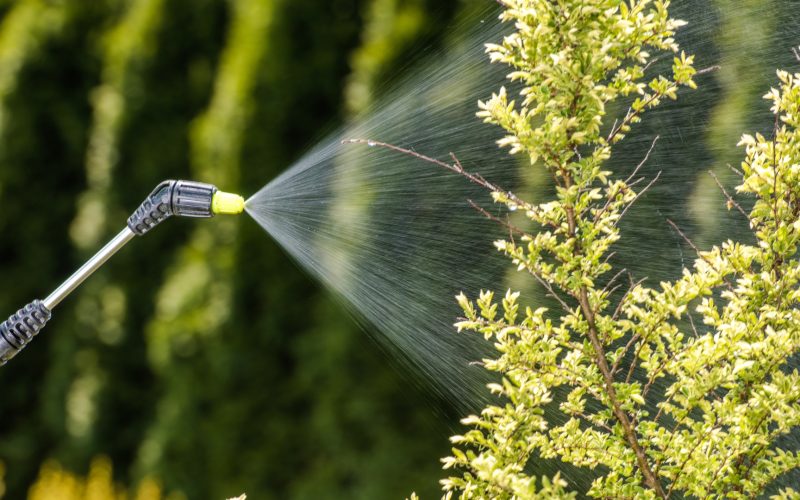Written by Rhoda Burrows, former Professor & SDSU Extension Horticulture Specialist.
Description
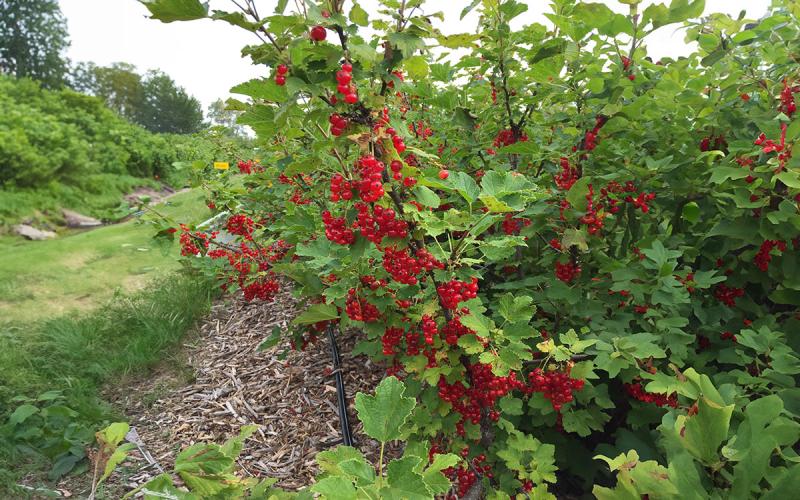
General Description: Currants (Ribes spp.) are small shrubs that can provide fruit even in partially or lightly shaded locations. Their relatively small plant size makes them ideal for homeowners, and they are cold hardy enough for all areas of the state, including higher elevations of the Black Hills.
Types
Red and White: Red and white currants (shown in Figure 1) may be used fresh or processed. They are self-fruitful, but they may produce a greater yield if a second variety pollinates them. White currants tend to be sweeter than red currants.
Black: Black currants (shown in Figure 2) have become popular for their high antioxidant content, but they have a strong resinous flavor. Because of their strong flavor, they are commonly used for jams, jellies, juice, or wine, rather than fresh eating. The common black currant cultivars are only partly self-fruitful, so two varieties are recommended for good fruit production; pollination is accomplished by insects. Black currants will not pollinate red or white currants, or vice versa.
Clove: Clove currants, also known as golden or buffalo currants (shown in Figure 3), are native to South Dakota and are more heat-tolerant. They have attractive, fragrant yellow flowers in the spring and colorful, purplish-red leaves in the fall. Their fruit, black when ripe, is mostly used for processed foods, such as jams. The flavor is somewhat resinous, but more fruity than black currants. Clove currant plants may reach five to six feet tall.
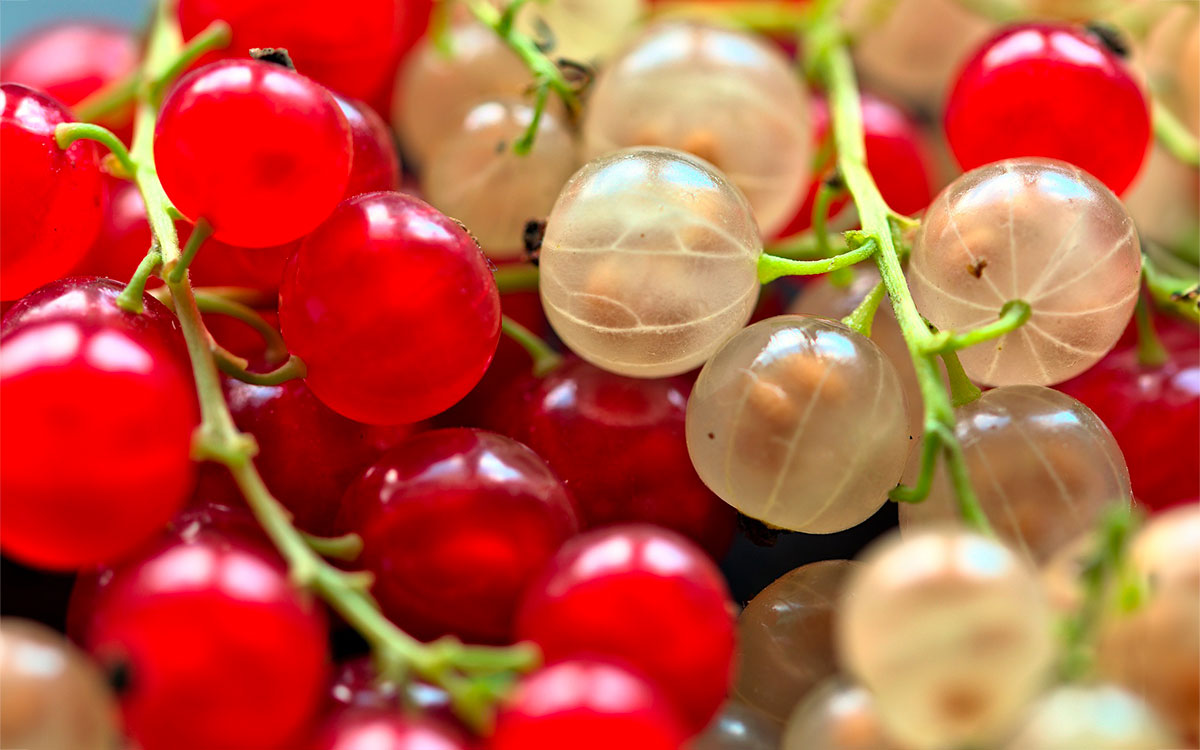
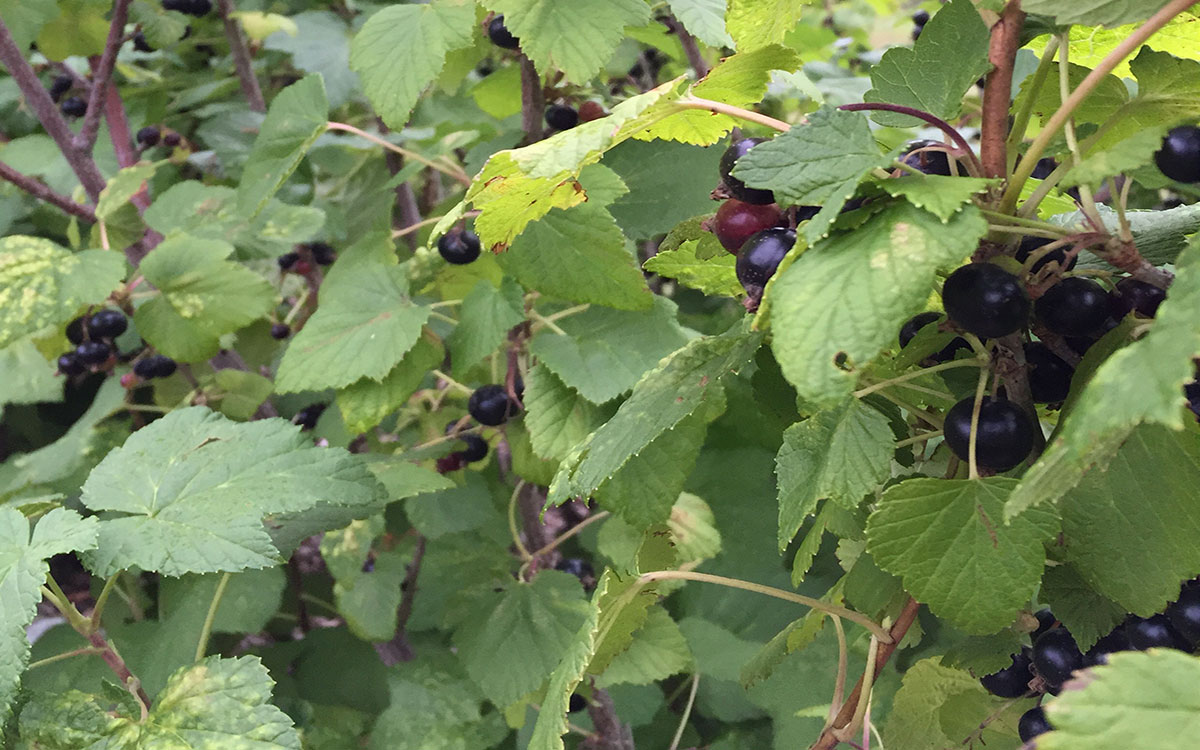
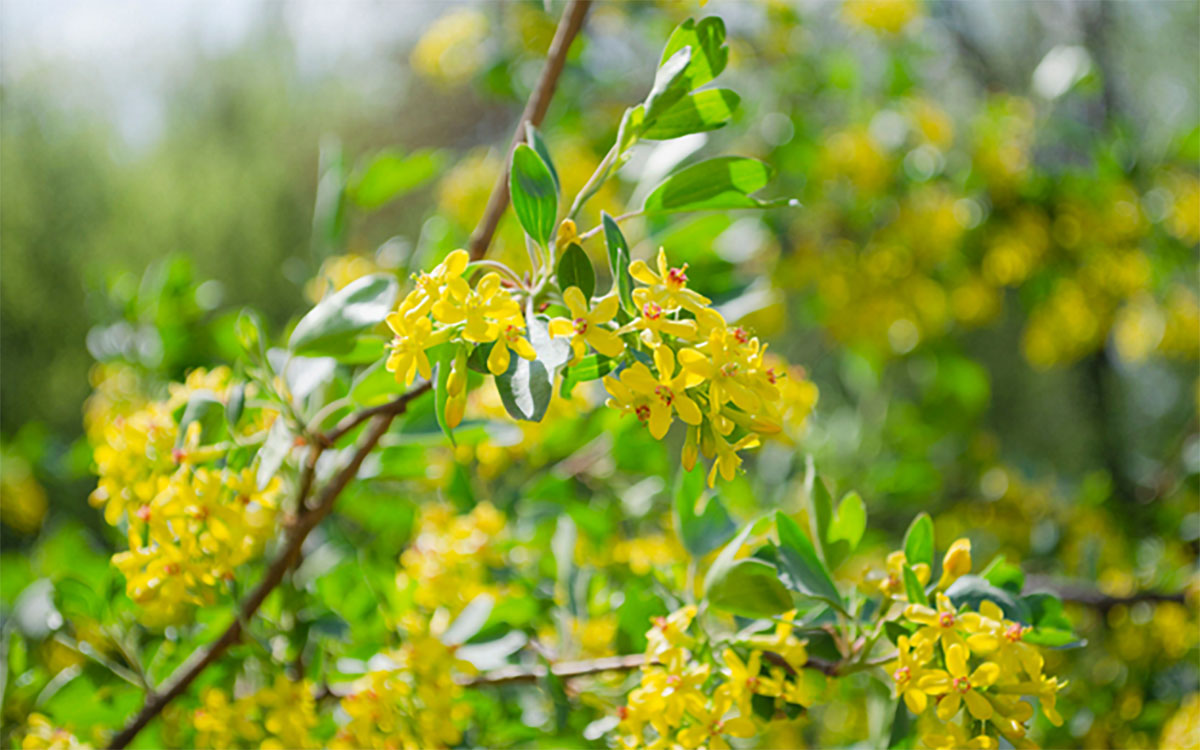
Planting
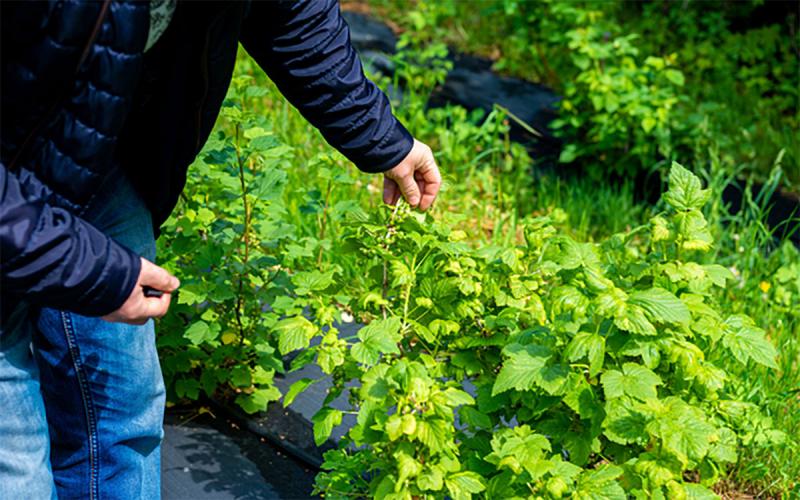
Site Selection and Preparation: Because currants prefer cooler climates, they should not be planted in heat-collecting areas, such as the south side of a building. As they bloom early in the spring, low-lying frost pockets should also be avoided. Currants are relatively adaptable to soil type, but they prefer richer soils with higher amounts of organic matter. They will need to be watered regularly and should be located accordingly.
Red, pink or white currants should be planted 3 to 4 feet apart, while black currants, which are larger plants, should be planted 4 to 5 feet apart. If the plants are bare root, soak them in water for no more than 3 or 4 hours to thoroughly hydrate the roots. The bushes may be planted slightly deeper than they were growing in the nursery to encourage suckers that will eventually become new canes. At planting, retain no more than 4 to 5 canes, and prune those back to 4 to 6 buds each to stimulate new growth. If any flowers appear in the first year, remove them so that the new plants put their energy into establishment.
Plant Care
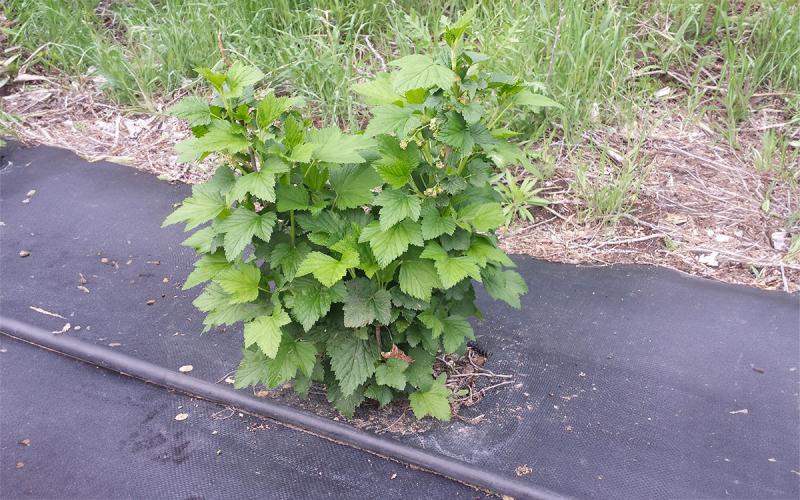
Weeding and Mulching: Mulch generously to keep the roots cool and moist, build soil organic matter, and discourage weeds (Figure 4).
Watering: As with many shade-tolerant plants, currants are shallow-rooted and not drought-tolerant, so they will need regular watering.
Fertilizer: Fertilize each plant with approximately 1/4 cup of a 10% nitrogen fertilizer (or the equivalent) the first year; gradually increasing to 1/2 cup per year in the spring. If a soil test has indicated that potassium or phosphorous are also needed, a well-aged manure will also help increase the organic matter of the soil.
Pruning: Red or white currants fruit best on 2 to 3-year-old wood. Prune in the late winter, keeping 3 to 4 canes of each age (1, 2, or 3 years old) and remove any cans older than 3 years, keeping the center of the plant somewhat open. Black currants fruit best on one-year-old wood, so when pruning them, keep up to 10 to 12 canes overall, with about half of them one-year-old wood. Always remove any dead, diseased, or insect-infested canes as soon as they are noticed.
Diseases and Pests
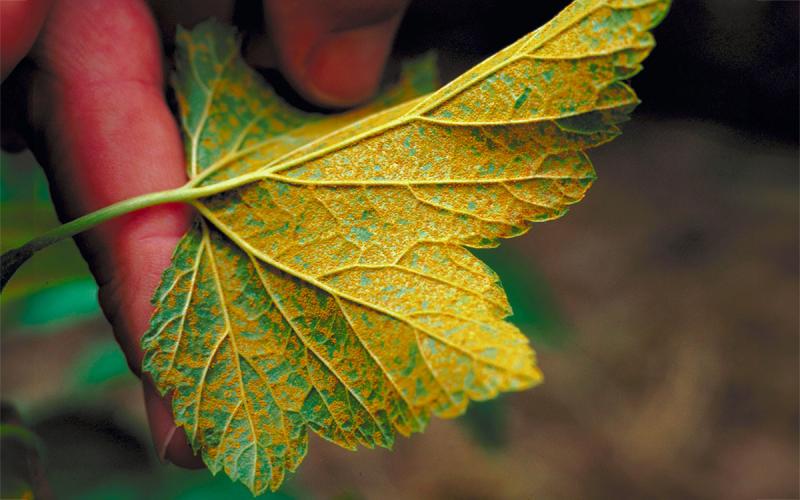
White Pine Blister Rust: Currants are members of the Ribes genus, which is an alternate host for white pine blister rust (Figure 5). In some states it is illegal to sell or even grow currants. Black currants are most commonly prohibited, although many states allow certain “immune” cultivars of black currant. However, a few years ago in Connecticut, even those cultivars were found to be infected. Red and white cultivars vary in their susceptibility. White Pine Blister Rust has been found in South Dakota, so avoid planting currants within 1,000 feet (and preferably one-mile) of any 5-needled pine (white pines, limber pines).
Powdery Mildew: Look for resistant cultivars.
Currant Borer: Larvae burrow into the canes, killing them over the next growing season. Remove and burn infested canes.
Spotted Wing Drosophila: A small fruit fly that lays eggs in developing/ripe fruit. Clean up any dropped fruit. Prune plants to keep good light penetration.
Harvest and Storage
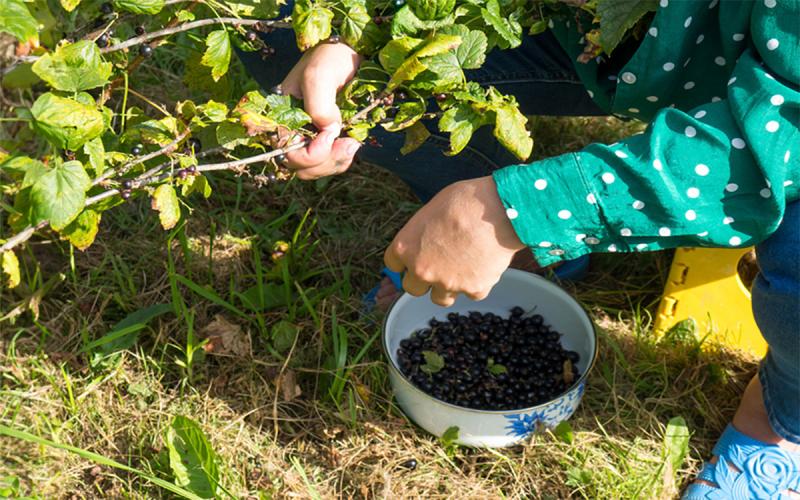
Harvest Timing: Black and clove currants ripen unevenly from mid-to-late summer; red and white currants tend to ripen more evenly on a cluster. Taste to determine ripeness. If using for jam, harvest before fully ripe to maximize their natural fruit pectin content.
Average Yield: A mature plant can produce five or more quarts of fruit (or three to ten pounds), depending on the type of currant and the age of the bush.
Storage: Cool fruit quickly and put it in covered containers or bags to maintain humidity. Currants will keep for several weeks.
Preparation and Nutrition
Preparation: Pink or white currants can be used fresh or processed. Red, black and clove currants are generally used for jellies, jam, syrup, smoothies or wine. Red currant juice has a tart flavor to it, similar to lemonade. Since most currants are tart, sweetener is usually added to any item made with them.
Nutrition Facts: Currants have high levels of Vitamin C (three times that of oranges), Vitamin A, and folic acid. They also contain a rich assortment of phytonutrients. In particular, black currants have some of the highest antioxidant levels measured in any cultivated fruit.
